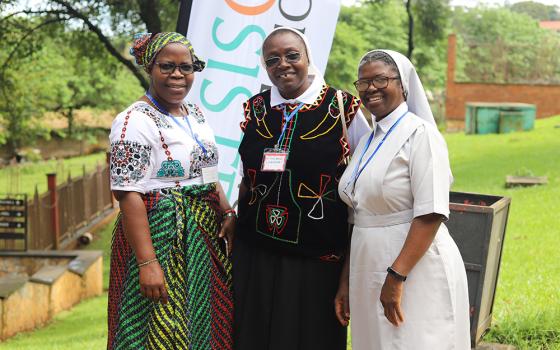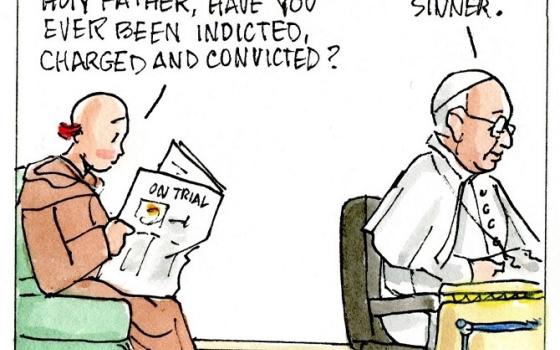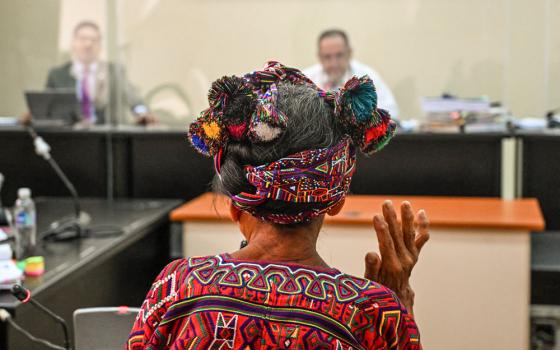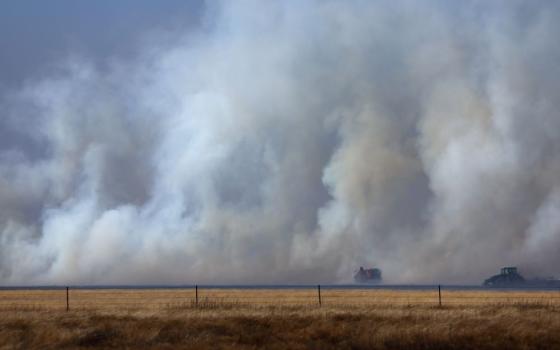New York
Today is the Vatican’s 42nd annual “World Communications Day,” with the theme this year being the somewhat unwieldy “The Media: At the Crossroads between Self-Promotion and Service. Searching for the Truth in Order to Share it with Others.”
Benedict XVI’s message for the occasion can be found here: Message for World Communications Day
Whether it’s divine providence or just dumb luck, World Communications Day this year happens to come on the heels of the pope’s trip to the United States. That’s a fitting coincidence, because Benedict’s April 15-20 swing in America illustrated a critically important bit of truth about church communications: Doing the right thing pastorally is also the best PR strategy.
In theory, of course, all papal trips are pastoral undertakings. Yet some moments inevitably come off as more pastoral than others, and during Benedict’s visit to America two moments in particular put the pope in uniquely pastoral settings: His meeting with victims of sexual abuse on April 17, and his visit to Ground Zero on April 20.
As it happens, these were also the two moments that left the deepest impressions on the broad American public.
That claim is not based merely on anecdotal impressions, but is now backed by solid polling data. In the immediate aftermath of the trip, the Knights of Columbus commissioned the Marist College Institute for Public Opinion to carry out a national April 22-24 survey about reactions to the visit, the results of which were released last Wednesday.
Marist College researchers interviewed 1,013 Americans who are 18 or older and who live in the continental United States for reactions to the pope’s trip. Results are said to be accurate within three percentage points.
One of the questions asked Americans to identify what they regarded as the “most meaningful” part of the trip. By a more than two to one margin, Americans pointed to the meeting with victims. Some 39 percent chose that moment as “most meaningful.” The next most popular response was the visit to Ground Zero, with 14 percent.
Every other event on the pope’s itinerary falls into the single digits: 9 percent pointed to the Masses at Nationals Park and Yankee Stadium, 7 percent the visit to the United Nations, 6 percent the reception at the White House, 5 percent the visit to the Park East Synagogue in New York, 3 percent the Youth Rally at Dunwoodie, and 2 percent the address to Catholic educators in Washington.
Strikingly, these two most popular choices – the meeting with sex abuse victims, and the Ground Zero visit – were also the briefest moments on the pope’s schedule, and those with the fewest people in attendance. The meeting with five victims was entirely private, while access to Ground Zero was tightly controlled for security reasons, with no more than 100 dignitaries and invited guests on hand.
Equally strikingly, neither moment featured a papal speech. No text was released from the meeting with victims, and at Ground Zero Benedict simply read a prayer composed for the occasion.
What all this illustrates, perhaps, is that with the right pastoral touch, religious leaders don’t need big crowds or high-octane rhetoric to make an impression.
The meeting with victims was destined to be a major news flash, given the deep scars left behind by the sexual abuse crisis, along with the fact that no pope had ever done this before – sitting down with survivors of abuse to hear their stories and to express his sorrow. Public reaction to the Ground Zero event is perhaps a bit more surprising, given that appearances at the site of the 9/11 attacks have become de rigueur for all VIPs visiting New York. It might have come off as perfunctory, especially given the fact that the stop came en route to what many regarded as the day’s main event – the huge public Mass in Yankees Stadium.
In the end, however, those few moments at Ground Zero left a deep impression, and I suspect it wasn’t just the solemnity of the event or the obvious psychological and cultural resonance of 9/11 for American audiences. It was also the pope’s meeting with 24 first responders, survivors, and family members of those who were lost – embracing them, consoling them, offering thanks for those who rushed to give aid.
In those moments, Benedict appeared not just as a global voice of conscience or one of the leading intellectuals on the world stage, but also as a simple pastor reaching out to suffering people.
One could make the argument, in fact, that Benedict’s visit to the United States introduced a new dimension to papal travel. Traditionally, the logic of a papal trip has been to evangelize, to confirm Catholics in the faith, and to engage major cultural questions from a moral and spiritual perspective. In America, however, Benedict also made healing a leitmotif – in this case, healing from the sexual abuse scandals and from the terrible blows of 9/11.
In the wake of massively positive public reaction to the meeting with victims and the trip to Ground Zero, both of these healing moments can seem like obvious things for the pope to do. That’s an after-the-fact perspective, however, which risks forgetting that there was serious opposition and ambivalence before these events happened.
In both the Vatican and in certain currents of the American hierarchy, there was reluctance about the idea of a papal encounter with victims of sexual abuse. Some in Rome worried that a papal mea culpa might encourage litigation against the church, and especially the Vatican, while some American bishops feared that too much emphasis on the sexual abuse crisis would obscure the rest of the pope’s message.
While no one opposed Benedict’s visit to Ground Zero in the same sense – indeed, it was always taken for granted that the pope had to go there – nevertheless anxiety surrounded this event too. Some trip organizers worried that it might be exploited politically in the context of the 2008 elections, as if the pope were making an implied statement about the “war on terror.” Others were concerned with the potential for negative fallout in the church’s relations with the Muslim world, already something of a sore spot under Benedict XVI.
Despite those concerns, Benedict chose to go ahead with both events, and to make the pastoral dimension of both experiences his primary concern. In the end, those choices paid huge dividends, both substantively and at the level of public impressions. They showcased a pastoral pope and a compassionate church, helping to create a context in which everything else Benedict said and did was seen in the best possible light.
All of which brings us back to where we began, with a point that cannot be restated often enough: Doing the right thing pastorally is also the best PR. One prays it's a lesson that will be taken to heart by all those with responsibility for church communications.
* * *
In broad strokes, the Marist College survey lends empirical validity to impressions that the trip was an enormous success for the pope: 84 percent of Americans said they saw, read or heard something about it, and 65 percent said they now have a more favorable impression of Pope Benedict (as opposed to just 14 percent who said “less positive”).
t
Among other key findings:
•t52 percent of Americans said the trip gave them a “more positive” view of the Catholic church, as opposed to 12 percent who said “less positive.”
•tBefore the visit, 29 percent of Americans said they didn’t know enough about Benedict XVI to offer an opinion of him; after the trip, that number dropped to 18 percent.
•tBenedict got about a ten-point bump in American ratings as both a “spiritual leader” and a “world leader,” with 62 percent describing him as “excellent” or “good” on the former and 51 percent saying the same about the latter.
•tBenedict’s biggest gain was in perceptions of his ability to promote good relations with other religions, with the percentage saying that he has a “good” or “excellent” capacity to do so going from 40 to 56 percent.
•tOn the sexual abuse crisis, 55 percent of Americans said the pope spent the right amount of time discussing it, while just one percent said “too much” and 20 percent said “too little.”
•t58 percent of Americans said they’re satisfied with the pope’s apology for the crisis, while 20 percent are dissatisfied with 22 percent say they’re unsure.
•tAlmost half of Americans, however – 46 percent – say the Catholic church has not done enough to avoid a similar situation in the future, while just 32 percent believe sufficient steps have been taken.
•tAlmost 40 percent of Americans said they’re more likely to lead a moral life and to give priority to their families because of the visit, and almost a third say they’re more likely to vote, participate in their communities and go to church.




